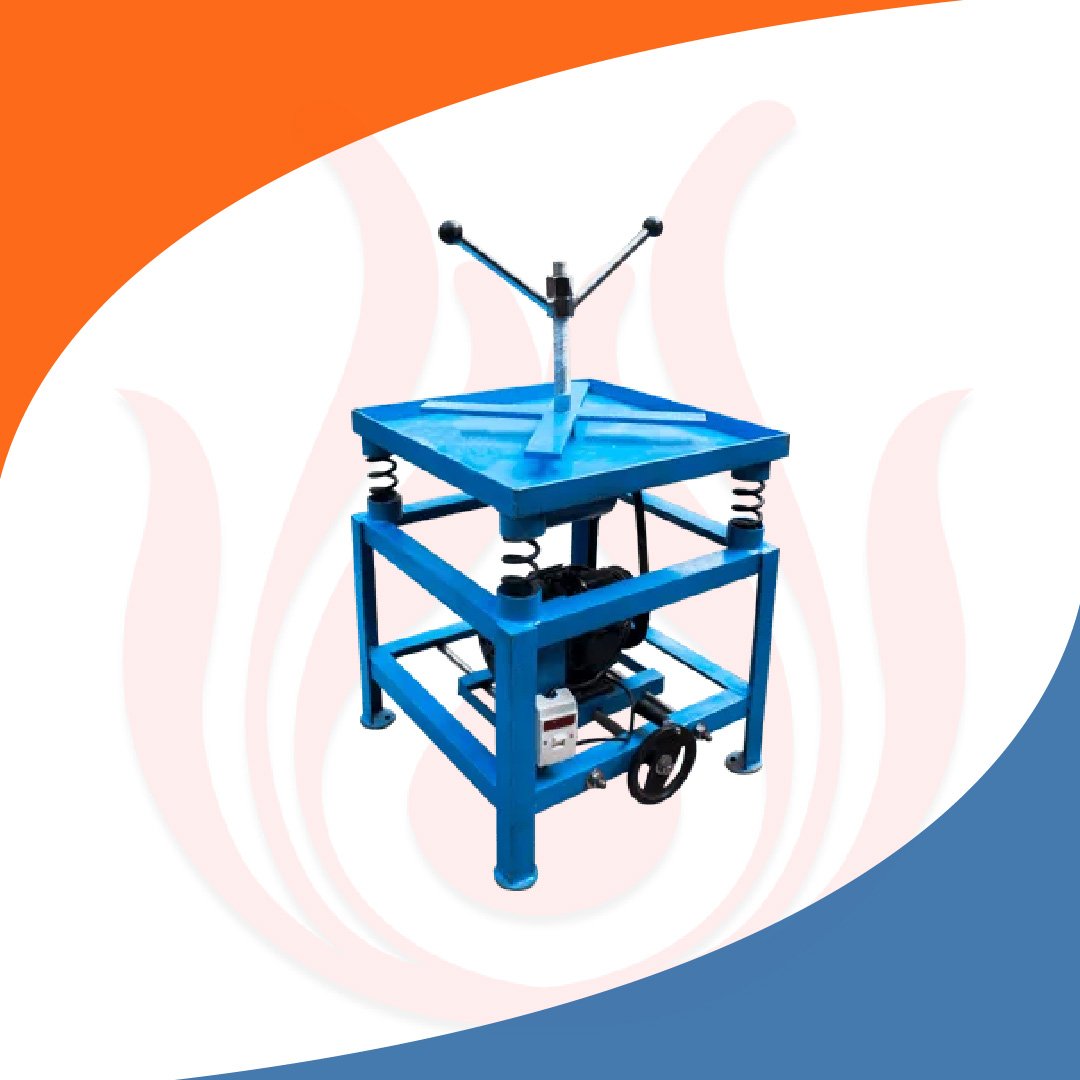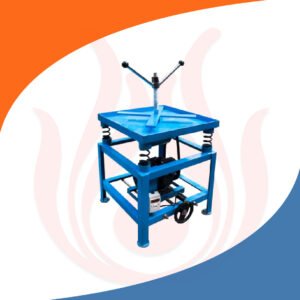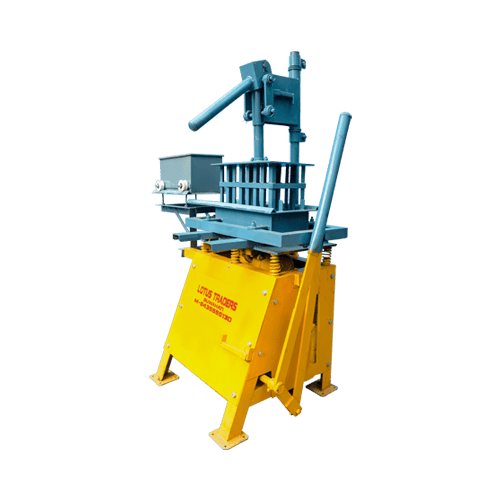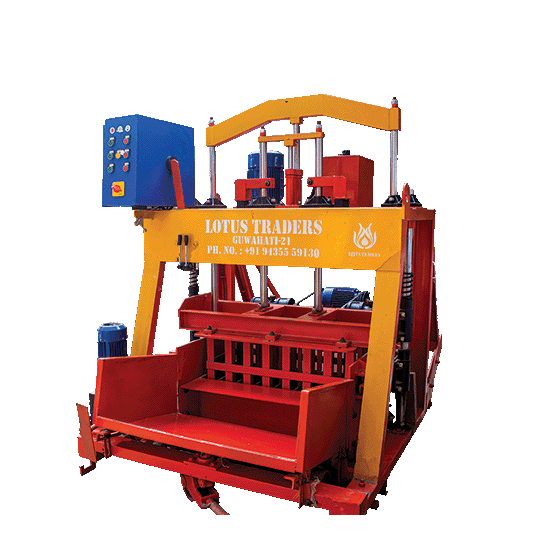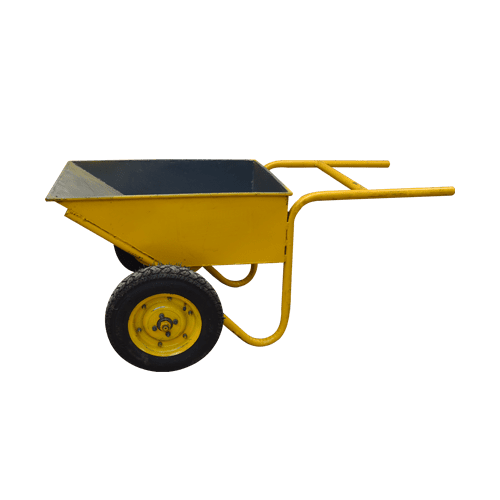Cube Vibration Table
Cube Vibration Table
- High Quality Materials
- Compliance With Standards
- Clear Product Information
- Warranty & Support
- Product Testing & Certification
- Delivery & Policy
- Ask a Question
- Estimated Delivery: 5 Days – 10 Days
- DESCRIPTION
FEATURE | SPECIFICATION |
Max Weight | 140 kg |
Vibrating Range (Amplitude) | 0-1 mm, 1-2 mm, 2-3 mm |
Power Supply | 230 Volts, A.C. Single Phase, 50 Cycles |
Vibration per minute | 2600 upto 3600 |
Table top | 500 x 500 mm |
Information About Cube Vibration Table:
What is cube vibration table?
In order to consolidate new concrete mixtures prior to testing their compressive strength, a concrete cube vibrating table is a crucial piece of equipment in construction testing facilities. Its components include a flat table top that vibrates at a frequency that may be adjusted, usually between 2600 and 3600 vibrations per minute. In order to create a denser and stronger concrete specimen, this vibration aids in the removal of air bubbles from the concrete mix.
Usually composed of steel plate, the table top has stops to keep moulds from shifting while they are in use. A vibrator positioned on the underside of the table has a variable pitch pulley arrangement that allows the speed to be changed. To make sure the concrete mix is vibrated for the appropriate length of time, the table also has a timer.
The concrete mix is poured into a mold and set on the table top in order to employ a cube vibrating table. After that, the table is turned on, and the concrete mix vibrates for the predetermined amount of time. The concrete specimen is left to cure after the vibration is finished and the mould is taken off the table.
Vibrating tables for concrete cubes are a crucial component of quality control in building projects because they guarantee that the concrete has the necessary strength.
Key features of cube vibration table
· Vibration frequency: A cube vibrating table usually vibrates at a frequency of 2600 to 3600 vibrations per minute. It has been discovered that this frequency effectively eliminates air bubbles from concrete mixtures without creating an excessive amount of aggregate segregation.
· Amplitude of vibration: A cube vibrating tables vibration usually ranges from 0.5 to 1.0 mm. This amplitude is adequate to eliminate air bubbles from concrete mixtures without overly harming the moulds.
· Duration of vibration: A concrete mix will normally vibrate for 15 to 30 seconds. This amount of time is enough to eliminate air bubbles from concrete mixtures without significantly reducing their workability.
· Tabletop dimensions: A cube vibrating tables tabletop measures either 600 mm by 600 mm or 750 mm by 750 mm. This size works well for holding a normal quantity of concrete molds.
· Tabletop material: Steel or cast iron are frequently used to make the tabletop of a cube vibrating table. These materials can tolerate the vibrations produced by the vibrator since they are robust and long-lasting.
· Vibrator: An electric or pneumatic motor usually serves as the vibrator on a cube vibrating table. Compared to pneumatic motors, electric motors are more often used since they are quieter and require less maintenance.
· Timer: A cube vibrating tables timer is used to regulate how long the vibration lasts. Ensuring that the concrete mix is vibrated for the appropriate duration is crucial.
Benefits of cube vibration table
When it comes to concrete testing and quality control, a concrete cube vibrating table is an invaluable instrument with several advantages.
· Enhanced Concrete Strength: Vibration tables extract air bubbles from the concrete mixture, which helps to make the concrete more dense and robust. This is so because air bubbles form cavities in the concrete, weakening the material as a whole. Concrete fills in these spaces with the help of vibration making the material denser and stronger.
· Uniform compaction across all concrete specimens is one way that vibration tables contribute to consistent concrete quality. This is critical for accurate test results since differences in concretes compaction can have a major impact on its compressive strength.
· Decreased Workability Loss: Concrete has a natural propensity to lose some of its workability over time. Vibration tables can help to mitigate this tendency. This is so that it will be simpler to put and finish the concrete since vibration helps to evenly disperse the particles throughout the mix.
· Decreased Segregation: In a concrete mixture, segregation refers to the division of several components such as the fine (sand) and coarse (gravel) particles. By maintaining the aggregates uniform distribution throughout the mix, vibration tables aid in the reduction of segregation.
· Enhanced Surface Finish: By lowering the quantity of air pockets on the surface, vibration tables can also aid in enhancing the concretes surface finish. This is so that the finish is denser and smoother as vibration aids in bringing the finer cement particles to the surface.
· Enhanced Efficiency: By cutting down on the amount of time needed to crush concrete specimens, vibration tables can greatly enhance the efficiency of concrete testing. This is due to the fact that vibration tables can compact concrete considerably more quickly than human methods.
· Saves Labor expenses: Vibration tables can save labor expenses by minimizing the amount of manual labor needed for compaction. This is due to the fact that vibration tables can compact concrete specimens with little assistance from humans.
· Enhanced Safety: By lowering the possibility of accidents resulting from hand compaction techniques, vibration tables can enhance safety. This is due to the fact that vibration tables remove the requirement for employees to physically and dangerously compact concrete sample by hand.
Uses of cube vibration table
Uses for a cube vibrating table include the following:
· Mixing new concrete mixtures and consolidating them before compressive strength testing. Using a cube vibrating table for this purpose is the most typical. The concretes density and strength are enhanced by the table which eliminates air bubbles from the mixture. Compaction fluctuations have a substantial impact on the compressive strength of concrete, hence this is vital for accurate testing findings.
· Air bubbles in concrete mixes that will be poured into forms being removed. Ensuring that the concrete is adequately compacted and free of any voids or air pockets that can cause the concrete to deteriorate is imperative.
· Compacting concrete mixtures for use in paving or other applications requiring a dense, smooth finish. By lowering the quantity of air pockets on the surface, vibration tables can aid in improving the concretes surface quality.
· Making goods out of precast concrete. Precast concrete items including pavers, pipes and blocks are frequently produced using vibration tables. In order to produce robust and long lasting products, the vibration aids in the consolidation of the concrete mixture.
· Engineers can better understand a structures resilience and endurance by using structural testing which evaluates how materials, structures or individual components respond to and endure vibrations.
· The purpose of quality control tables is to verify that products fulfill industry standards and regulations by testing their dependability and quality.
· Research and Development: To understand how materials or structures behave under various vibratory situations and to help create better designs and materials, scientists and researchers employ cube vibration tables.
The following are some particular instances of the application of cube vibrating tables in the building industry:
· Evaluating the concrete’s compressive strength before using it for slabs, walls and foundations.
· Evaluating the concretes compressive strength before using it for construction projects like bridges and roads.
· Evaluating the concretes compressive strength before using it to make manufactured items like architectural precast panels.
· Combining concrete mixtures for use on floors, countertops and other surfaces where a dense and smooth finish is needed.
· Eliminating air bubbles from concrete mixtures before they are poured into forms to be used for roads, walkways and other outside uses.
· For confirming the strength and quality of concrete in a range of construction applications, cube vibrating tables are a vital tool.
How cube vibration table works?
By eliminating air bubbles and dispersing the aggregates uniformly throughout the mixture, a mechanical device called a cube vibrating table is used to consolidate new concrete mixtures. The concrete’s strength and longevity are enhanced by this technique.
The basic procedures for operating a cube vibrating table are as follows:
· Pour the concrete mix into the mould: A mould intended to produce a cube specimen is filled with freshly mixed concrete mix. Debris and other items should be removed from the mould to avoid influencing the tests outcome.
· Position the mould on the vibrating table: The vibrating table which is usually a rectangular, flat platform with a vibrator attached is where the mould is placed next.
· When the vibrator is activated, the table starts to vibrate at a predetermined frequency and amplitude. Typically, the vibration has an amplitude of 0.5 to 1.0 millimeters and a frequency of 2600 to 3600 vibrations per minute.
· Procedure for vibration: A predetermined amount of time, usually between 15 and 30 seconds is spent vibrating the concrete mix. In order to guarantee that the concrete mix is appropriately consolidated, the vibrations duration is crucial but it shouldn’t be prolonged to the point where the aggregates become unduly separated.
· Take out the mould: The mould is taken off of the vibrating table after the vibration is finished. After a predetermined amount of time, the concrete specimen is allowed to cure before its compressive strength is evaluated.
· The vibration action rubs the particles against one another which helps eliminate air bubbles from the concrete mix. By doing this, the air bubbles are broken up and the aggregates are dispersed equally throughout the mixture. In addition to increasing the concrete mixs strength and longevity, vibration also aids in compacting it.
Conclusion
A cube vibration table is a specialized tool used in many different industries, although it is most commonly employed in material testing, civil engineering and construction. Its main purpose is to evaluate and model how vibrations affect materials, components and structures.
Usually, this table is made out of a solid surface or platform that test specimens or models—which are frequently shaped like cubes or other geometric shapes—are put atop. Vibration-generating machinery mounted on the table cause the specimens to experience regulated vibrations with different frequencies, amplitudes and orientations. These vibrations simulate natural phenomena like earthquakes, vibrations caused by moving vehicles or other mechanical stressors.
Informed judgments concerning material selection, structural integrity and design revisions are made possible by the data gathered from these tests which ultimately results in safer and more durable structures for a variety of purposes.





